Navve Wasserman
DocReRank: Single-Page Hard Negative Query Generation for Training Multi-Modal RAG Rerankers
May 28, 2025Abstract:Rerankers play a critical role in multimodal Retrieval-Augmented Generation (RAG) by refining ranking of an initial set of retrieved documents. Rerankers are typically trained using hard negative mining, whose goal is to select pages for each query which rank high, but are actually irrelevant. However, this selection process is typically passive and restricted to what the retriever can find in the available corpus, leading to several inherent limitations. These include: limited diversity, negative examples which are often not hard enough, low controllability, and frequent false negatives which harm training. Our paper proposes an alternative approach: Single-Page Hard Negative Query Generation, which goes the other way around. Instead of retrieving negative pages per query, we generate hard negative queries per page. Using an automated LLM-VLM pipeline, and given a page and its positive query, we create hard negatives by rephrasing the query to be as similar as possible in form and context, yet not answerable from the page. This paradigm enables fine-grained control over the generated queries, resulting in diverse, hard, and targeted negatives. It also supports efficient false negative verification. Our experiments show that rerankers trained with data generated using our approach outperform existing models and significantly improve retrieval performance.
Don't Judge Before You CLIP: A Unified Approach for Perceptual Tasks
Mar 17, 2025Abstract:Visual perceptual tasks aim to predict human judgment of images (e.g., emotions invoked by images, image quality assessment). Unlike objective tasks such as object/scene recognition, perceptual tasks rely on subjective human assessments, making its data-labeling difficult. The scarcity of such human-annotated data results in small datasets leading to poor generalization. Typically, specialized models were designed for each perceptual task, tailored to its unique characteristics and its own training dataset. We propose a unified architectural framework for solving multiple different perceptual tasks leveraging CLIP as a prior. Our approach is based on recent cognitive findings which indicate that CLIP correlates well with human judgment. While CLIP was explicitly trained to align images and text, it implicitly also learned human inclinations. We attribute this to the inclusion of human-written image captions in CLIP's training data, which contain not only factual image descriptions, but inevitably also human sentiments and emotions. This makes CLIP a particularly strong prior for perceptual tasks. Accordingly, we suggest that minimal adaptation of CLIP suffices for solving a variety of perceptual tasks. Our simple unified framework employs a lightweight adaptation to fine-tune CLIP to each task, without requiring any task-specific architectural changes. We evaluate our approach on three tasks: (i) Image Memorability Prediction, (ii) No-reference Image Quality Assessment, and (iii) Visual Emotion Analysis. Our model achieves state-of-the-art results on all three tasks, while demonstrating improved generalization across different datasets.
REAL-MM-RAG: A Real-World Multi-Modal Retrieval Benchmark
Feb 17, 2025Abstract:Accurate multi-modal document retrieval is crucial for Retrieval-Augmented Generation (RAG), yet existing benchmarks do not fully capture real-world challenges with their current design. We introduce REAL-MM-RAG, an automatically generated benchmark designed to address four key properties essential for real-world retrieval: (i) multi-modal documents, (ii) enhanced difficulty, (iii) Realistic-RAG queries and (iv) accurate labeling. Additionally, we propose a multi-difficulty-level scheme based on query rephrasing to evaluate models' semantic understanding beyond keyword matching. Our benchmark reveals significant model weaknesses, particularly in handling table-heavy documents and robustness to query rephrasing. To mitigate these shortcomings, we curate a rephrased training set and introduce a new finance-focused, table-heavy dataset. Fine-tuning on these datasets enables models to achieve state-of-the-art retrieval performance on REAL-MM-RAG benchmark. Our work offers a better way to evaluate and improve retrieval in multi-modal RAG systems while also providing training data and models that address current limitations.
The Wisdom of a Crowd of Brains: A Universal Brain Encoder
Jun 18, 2024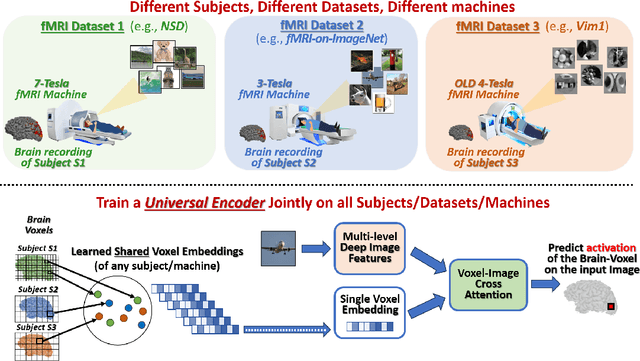
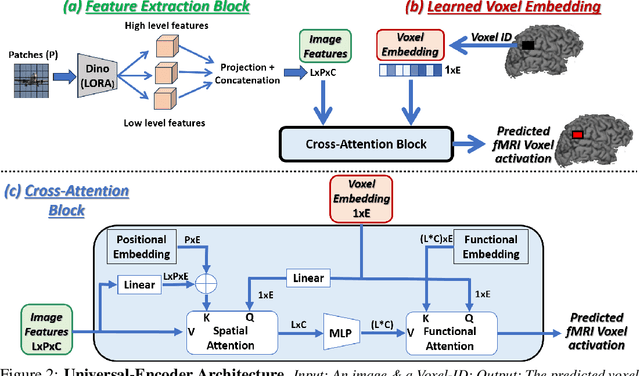
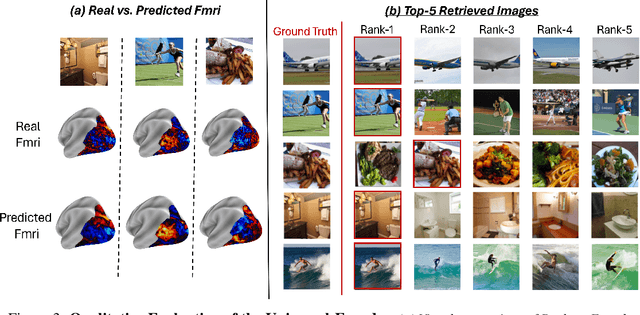

Abstract:Image-to-fMRI encoding is important for both neuroscience research and practical applications. However, such "Brain-Encoders" have been typically trained per-subject and per fMRI-dataset, thus restricted to very limited training data. In this paper we propose a Universal Brain-Encoder, which can be trained jointly on data from many different subjects/datasets/machines. What makes this possible is our new voxel-centric Encoder architecture, which learns a unique "voxel-embedding" per brain-voxel. Our Encoder trains to predict the response of each brain-voxel on every image, by directly computing the cross-attention between the brain-voxel embedding and multi-level deep image features. This voxel-centric architecture allows the functional role of each brain-voxel to naturally emerge from the voxel-image cross-attention. We show the power of this approach to (i) combine data from multiple different subjects (a "Crowd of Brains") to improve each individual brain-encoding, (ii) quick & effective Transfer-Learning across subjects, datasets, and machines (e.g., 3-Tesla, 7-Tesla), with few training examples, and (iii) use the learned voxel-embeddings as a powerful tool to explore brain functionality (e.g., what is encoded where in the brain).
Paint by Inpaint: Learning to Add Image Objects by Removing Them First
Apr 28, 2024
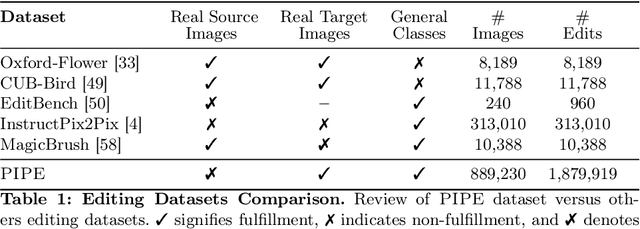

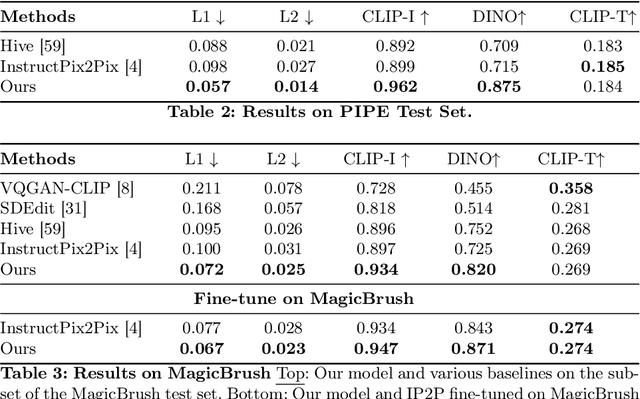
Abstract:Image editing has advanced significantly with the introduction of text-conditioned diffusion models. Despite this progress, seamlessly adding objects to images based on textual instructions without requiring user-provided input masks remains a challenge. We address this by leveraging the insight that removing objects (Inpaint) is significantly simpler than its inverse process of adding them (Paint), attributed to the utilization of segmentation mask datasets alongside inpainting models that inpaint within these masks. Capitalizing on this realization, by implementing an automated and extensive pipeline, we curate a filtered large-scale image dataset containing pairs of images and their corresponding object-removed versions. Using these pairs, we train a diffusion model to inverse the inpainting process, effectively adding objects into images. Unlike other editing datasets, ours features natural target images instead of synthetic ones; moreover, it maintains consistency between source and target by construction. Additionally, we utilize a large Vision-Language Model to provide detailed descriptions of the removed objects and a Large Language Model to convert these descriptions into diverse, natural-language instructions. We show that the trained model surpasses existing ones both qualitatively and quantitatively, and release the large-scale dataset alongside the trained models for the community.
 Add to Chrome
Add to Chrome Add to Firefox
Add to Firefox Add to Edge
Add to Edge